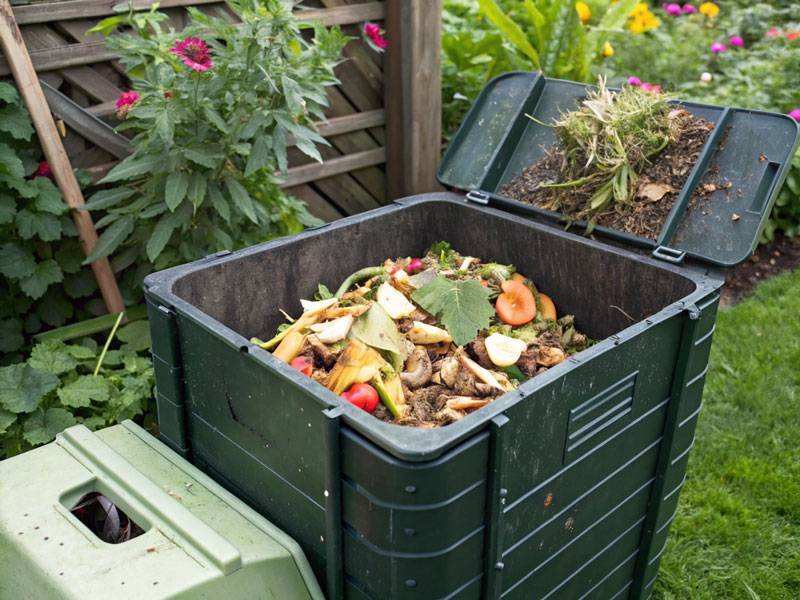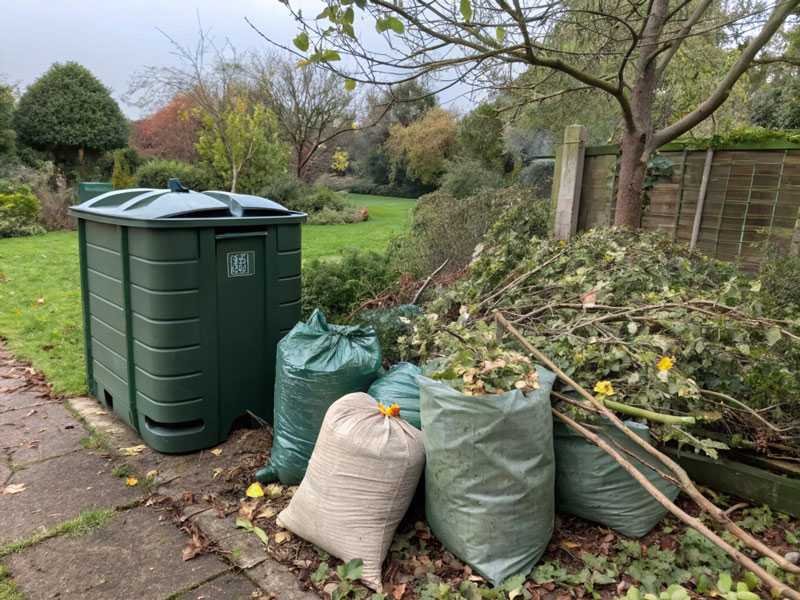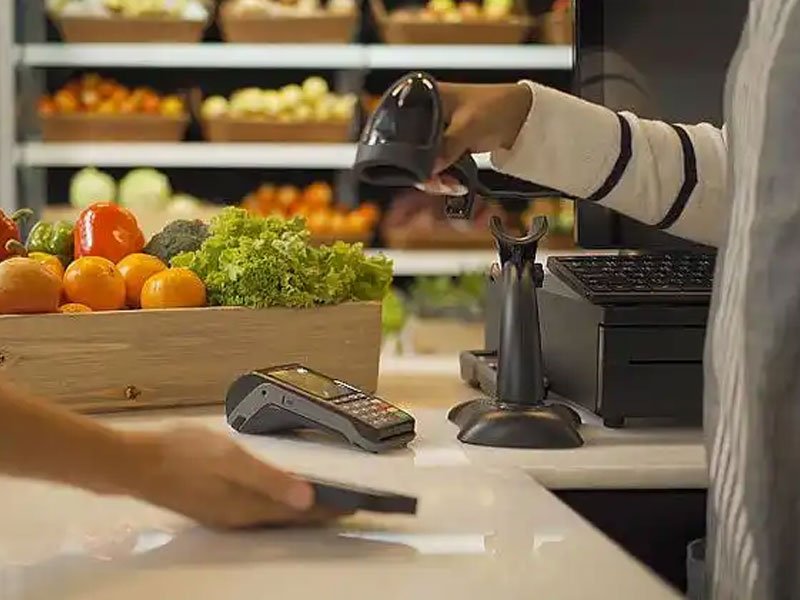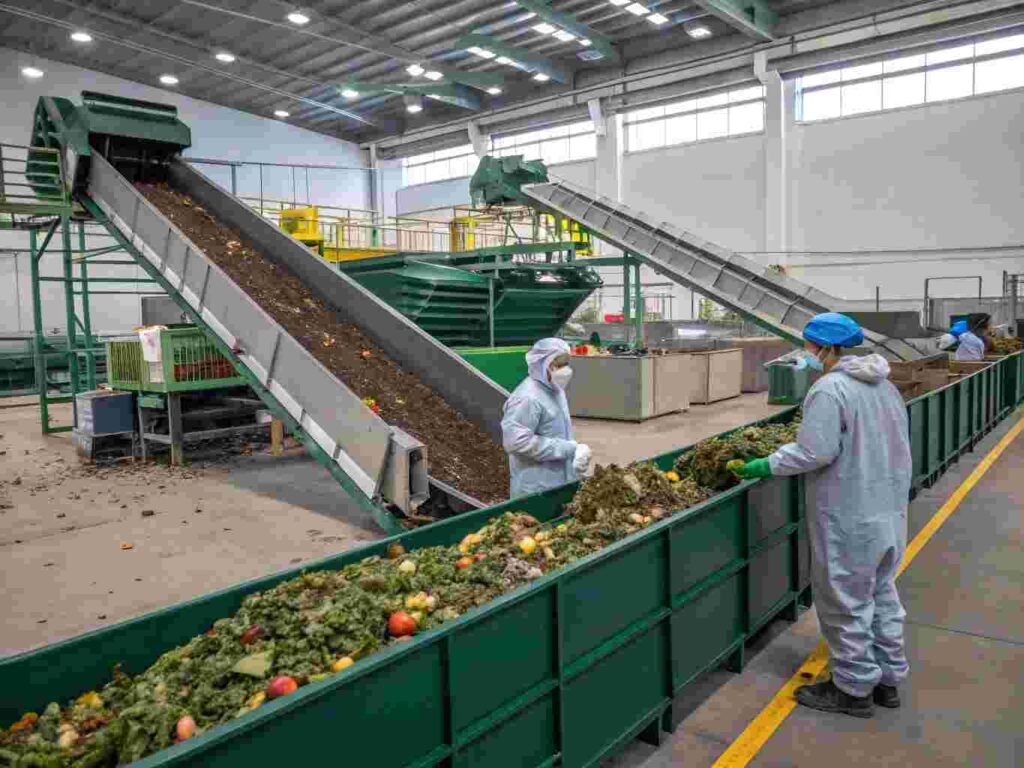What is compost? While you might be a bit confused about the concept, compost is a nutrient-rich soil conditioner created by microorganisms breaking down organic matter (such as food waste and fallen leaves). It provides nutrients for plants, reduces landfill waste, and promotes sustainable development.
This article will provide a comprehensive guide for home gardeners and environmentalists. From the definition and benefits of composting to practical steps for home and urban composting, along with solutions to common problems and safety tips, this article will help you easily get started on your composting journey. Let's explore how to transform food waste into valuable composted soil!

What Is Composting?
Compost, or organic fertilizer, is a nutrient-rich substance formed by the aerobic decomposition of organic matter (such as food scraps, dead leaves, and grass clippings) by microorganisms. This is a natural cycle that provides nutrients such as nitrogen, phosphorus, and potassium to the soil, improving its structure, moisture retention, and aeration.
Elements of successful composting:
The composting process relies on aerobic decomposition.
- Green (nitrogen-rich) materials, such as vegetable peels, coffee grounds, and fresh grass, provide nitrogen.
- Brown (carbon-rich) materials, such as dry leaves, cardboard, and sawdust, provide carbon.
- Water and oxygen: Keep the compost moist (like a wrung-out sponge) and stir it regularly to promote decomposition.
- Microorganisms: Bacteria, fungi, and other microorganisms break down organic matter and generate heat (compost temperatures can reach 60°C).
The difference between compost and fertilizer
Compost is a natural source of humus that improves overall soil health, while chemical fertilizers only provide specific nutrients and can cause soil degradation. Compost is reusable and suitable for sustainable gardening.
What Are the Benefits of Composting
- Reduces Landfill Waste: Diverts food scraps and yard waste from landfills, cutting methane emissions (EPA: ~30% of waste is organic).
- Enriches Soil: Boosts soil fertility with natural nutrients, improving plant growth without chemical fertilizers.
- Lowers Greenhouse Gases: Reduces emissions from landfilling, helping combat climate change.
- Conserves Resources: Saves water, reduces fertilizer use, and minimizes pesticide runoff.
- Supports Circular Economy: Transforms waste into a resource, promoting sustainable systems.
- Encourages Sustainable Living: Raises awareness and inspires eco-friendly habits.
- Saves Money: Cuts waste disposal and fertilizer costs for households and communities.
- Prevents Soil Erosion: Strengthens soil structure, protecting against erosion and supporting biodiversity.
- Reduces Chemicals: Provides a natural alternative to harmful fertilizers and pesticides.
- Builds Community: Fosters collaboration through shared composting programs.

How to Compost at Home: A Step-by-Step Guide
What Are the Benefits of Composting
Whether you have a backyard or just want to try home composting, here's a beginner-friendly five-step guide:
Step 1: Choose a Composting Method
Backyard Composting: Use a compost bin or open-air compost pile for gardens. Indoor Composting: Use worm composting or a small compost bucket for city dwellers. Recommended Compost Bins: FCMP Outdoor IM4000 (rotating, easy-to-turn) or DIY Wooden Compost Bins.
Step 2: Choose Compost Materials
Green Compost: Fruit peels, vegetable scraps, coffee grounds, fresh grass (provides nitrogen). Brown Compost: Dry leaves, cardboard, straw (provides carbon). Materials to Avoid: Meat, dairy products, greasy foods, pet feces (may attract pests or pathogens).
Step 3: Build a Compost Pile
Carbon-to-Nitrogen Ratio: The ideal ratio is 30:1 (approximately 3:1 brown compost:green compost). Layering: Alternate between adding green and brown materials, keeping the compost moist (like a wrung-out sponge). Ventilation: Ensure adequate air circulation to prevent anaerobic decomposition and odors.
Step 4: Maintenance and Turning
Turn the compost every 1-2 weeks to increase oxygen and promote decomposition. Check the temperature: 40-60°C indicates active decomposition. Adjust the humidity: If too moist, add brown materials; if too dry, water.
Step 5: Harvest the Compost
Compost matures in 2-6 months. Mature compost is dark brown, loose, and has an earthy aroma. Use: Mix into soil (1:3 ratio) or use as mulch.

Composting in Small Spaces: How Urban Living Can Compost
Composting is possible even without a backyard! Urban composting is ideal for those living in apartments or balconies. Here are three practical methods:
Vermicomposting
Using earthworms to break down food waste is suitable for indoor use, requires minimal space, and is odor-free. Recommended tool: Worm Factory 360 (compact and easy to manage).
Tip: Add a small amount of food waste weekly and cover with coir (such as shredded paper) to control odor.
Electric Composters
Such as the Lomi Composter, quickly converts food waste into compost and is ideal for busy individuals. Pros: Automated, no turning required; Cons: Higher price (approximately 2,000-3,000 yuan).
Bokashi Composting
Processes food waste through anaerobic fermentation, suitable for sealed containers and requires minimal space.
Tip: Use Bokashi bran to accelerate fermentation, achieving initial decomposition in 2-4 weeks.
Urban Composting Tips
Use airtight containers to prevent pests and odors. Use mature compost in balcony pots or community gardens. Join a community composting program to share costs and space.
Common Composting Mistakes
Mistake 1: Compost Smell
Cause: Excessive green material or excessive moisture, leading to anaerobic decomposition.
Solution: Add brown material (such as dry leaves), stir the compost, and improve ventilation.
Mistake 2: Slow Decomposition
Cause: Imbalanced carbon-nitrogen ratio (too much brown material) or lack of oxygen.
Solution: Add green material (such as fruit peels) and stir the compost regularly.
Mistake 3: Attracting Pests
Cause: Adding meat or dairy products, or uncovering food waste.
Solution: Avoid non-compostable materials, bury food waste, or use a sealed compost bin.
Mistake 4: Compost Too Wet or Too Dry
Cause: Imbalanced moisture.
Solution: If it's too wet, add brown material; if it's too dry, sprinkle water moderately to maintain a "wrung-out sponge" consistency.
 retail cashiers
retail cashiers
Is Composting Worth It?
Composting is not only environmentally friendly but also saves money. Here's a cost-benefit comparison:
Initial Cost
Compost Bin: 50-200 yuan (DIY wooden bin or rotary composter). Tools: 10-50 yuan (shovel, thermometer). Advanced Equipment: Worm Compost Bin (50-100 yuan) or Electric Composter (2,000-3,000 yuan).
Cost Savings
Fertilizer Costs: Save 50-200 yuan annually (no need to buy chemical fertilizer). Garbage Disposal: Reduced waste volume saves 10-50 yuan/year (depending on region). Gardening Benefits: Increased vegetable and flower yields save on purchase costs.
Payback Time
Standard Compost Bin: Payback in 1-2 years. Advanced Equipment: Payback in 3-5 years, suitable for long-term use.
Intangible Benefits
Healthier plants, reduced environmental pollution, and support for zero-waste living.
 working principle of industrial composting
working principle of industrial composting
Customizing Compost for Specific Plants
Different plants require different compost ratios. Here are some recommendations:
Vegetables (such as tomatoes and lettuce)
Use fully mature compost (to avoid nitrogen burn) and mix it into the soil (a 1:3 ratio). Nitrogen-rich compost is ideal for promoting leaf and fruit growth.
Flowers (such as roses)
Adding compost improves drainage and enhances flower color. Apply a thin layer of compost as mulch each season.
Lawns
Spread a thin layer of compost (0.5 cm) to promote root health. Use aeration for enhanced results.
Fruit Trees
Use compost as mulch to retain moisture and slowly release nutrients. Avoid direct contact with tree trunks to prevent rot.
Tip: Test the compost pH (ideally 6.0-7.5) to ensure it's suitable for your plants.
 industrial composting
industrial composting
Composting Safety Tips
Avoid Health Risks:Wear gloves to prevent contact with mold and bacteria. Avoid Harmful Materials: Do not compost pet feces or pest-infested plants to prevent pathogens.
Safe Handling
Use tools to turn the compost, not your hands. Store compost in a well-ventilated area to prevent mold.
Allergy Protection
Those who are sensitive to mold or dust should wear a mask. Children must be supervised when composting.
How to Get Children Composting?
Why teach children composting?
Cultivate environmental awareness and understand the circular economy. Learn about biodegradation and soil science through hands-on practice.
Fun Activities
Mini Compost Pots: Use transparent pots to store food waste and brown materials and observe the decomposition process.
Green-Brown Sorting Game: Teach children to distinguish between green materials (fruit peels) and brown materials (paper).
Compost Diary: Record changes in compost and draw a diagram of the decomposition process.
School Applications
Set up a classroom worm composting bin and have students take turns maintaining it. Organize composting workshops and integrate them with gardening activities.
Conclusion
What is composting? It's an eco-friendly way to convert organic waste into composted soil. It not only makes your garden healthier, but also reduces waste, saves money, and supports sustainable gardening. Whether you're a backyard gardener or a city dweller, you can easily get started with a simple compost bin or worm composting. Get started now! Try making your own compost or join a community composting program to help the planet. Share your composting experiences in the comments, or join your local gardening community to explore zero-waste living!
Last updated: August 16, 2025 at 17:20 pm




